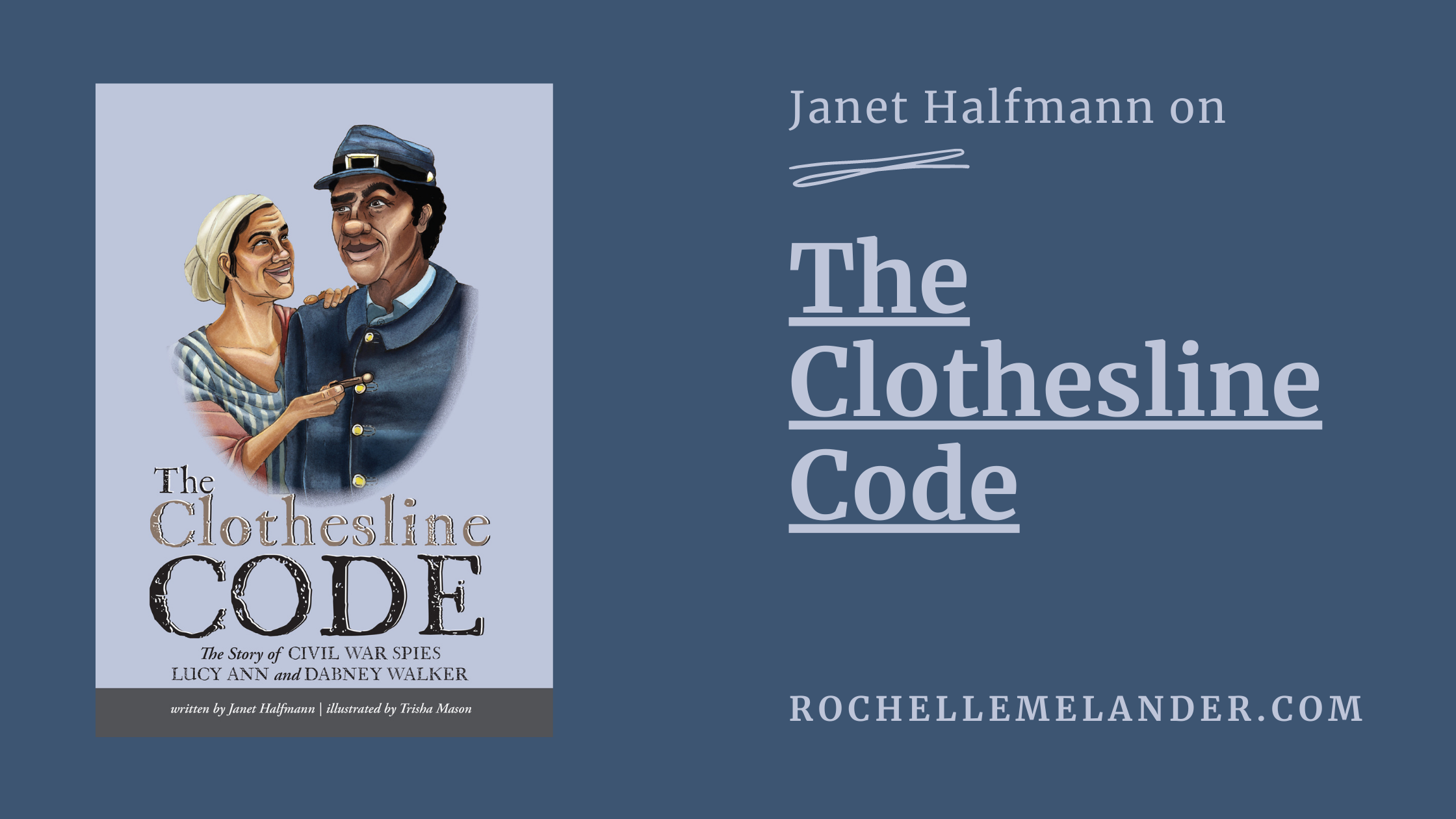A Note to Readers
Readers!
I am delighted to welcome Janet Halfmann to the blog. I’ve know Janet through my local SCBWI for years. And I’ve always admired the way she takes on lesser-known stories and researches them until she finds the truth behind the legends. She appeared on my writing coaching blog to talk about Researching historical stories. In today’s post, she writes about how you can use her book in the classroom.
Best wishes,
Rochelle
Teaching The Clothesline Code
Tell us about your book, The Clothesline Code.
 The Clothesline Code is a lost-to-history story about a formerly enslaved couple, Lucy Ann and Dabney Walker, who spied for the Union in Virginia during the Civil War. They created a code using laundry on a clothesline for sending military secrets from General Lee’s Confederate headquarters to a Union army camp across the river, at great risk to themselves.
The Clothesline Code is a lost-to-history story about a formerly enslaved couple, Lucy Ann and Dabney Walker, who spied for the Union in Virginia during the Civil War. They created a code using laundry on a clothesline for sending military secrets from General Lee’s Confederate headquarters to a Union army camp across the river, at great risk to themselves.
Who are your ideal readers?
My ideal readers are kids ages 6-11. It helps to have basic knowledge about slavery and the Civil War before reading this book, but those explanations can also be given while reading the book.
How might a teacher use your book in the classroom?
The Clothesline Code is perfect for Black History Month. It is an example of two of the many thousands of Black people, who in ways large and small, helped win the Civil War. Students might discuss other ways Black people helped the Union effort.
The book is also a great example of a story that has been lost to history. Kids might discuss why they think this story has been unsung for so long.
It was against the law for the Walkers to learn how to read and write, so their code couldn’t include letters. Kids might discuss how not knowing how to read or write would affect people’s lives in other ways.
The book also would be a great resource for studying about the many aspects of the Civil War, especially how it affected the enslaved and those who escaped to Union lines.
Can you share an exercise or activity that teachers can do with students after they’ve read your book?
 Kids might search for images of historical markers online, and pick one about someone that intrigues them to research and find out more.
Kids might search for images of historical markers online, and pick one about someone that intrigues them to research and find out more.
Students might come up with a code of their own that doesn’t rely on letters. They might use items readily available, such as hand and finger movements or flashlight beams.
A reviewer of The Clothesline Code provided some fun code exercises for kids here:
 About the author. Janet Halfmann is a multi-award-winning children’s author who strives to make her books come alive for young readers and listeners. She writes picture book biographies about little-known people of achievement. She also writes picture books about animals and nature.
About the author. Janet Halfmann is a multi-award-winning children’s author who strives to make her books come alive for young readers and listeners. She writes picture book biographies about little-known people of achievement. She also writes picture books about animals and nature.
Recent titles by Janet include The Clothesline Code: The Story of Civil War Spies Lucy Ann and Dabney Walker; A Bobby-Dazzler of a Pouch!; The Story of Civil War Hero Robert Smalls (Chapter Book for Grades 3-7); Midnight Teacher: Lilly Ann Granderson and Her Secret School. Janet has written more than forty fiction and nonfiction books for children. Kids can find out more about her books and ask me questions through my website: https://www.janethalfmannauthor.com


